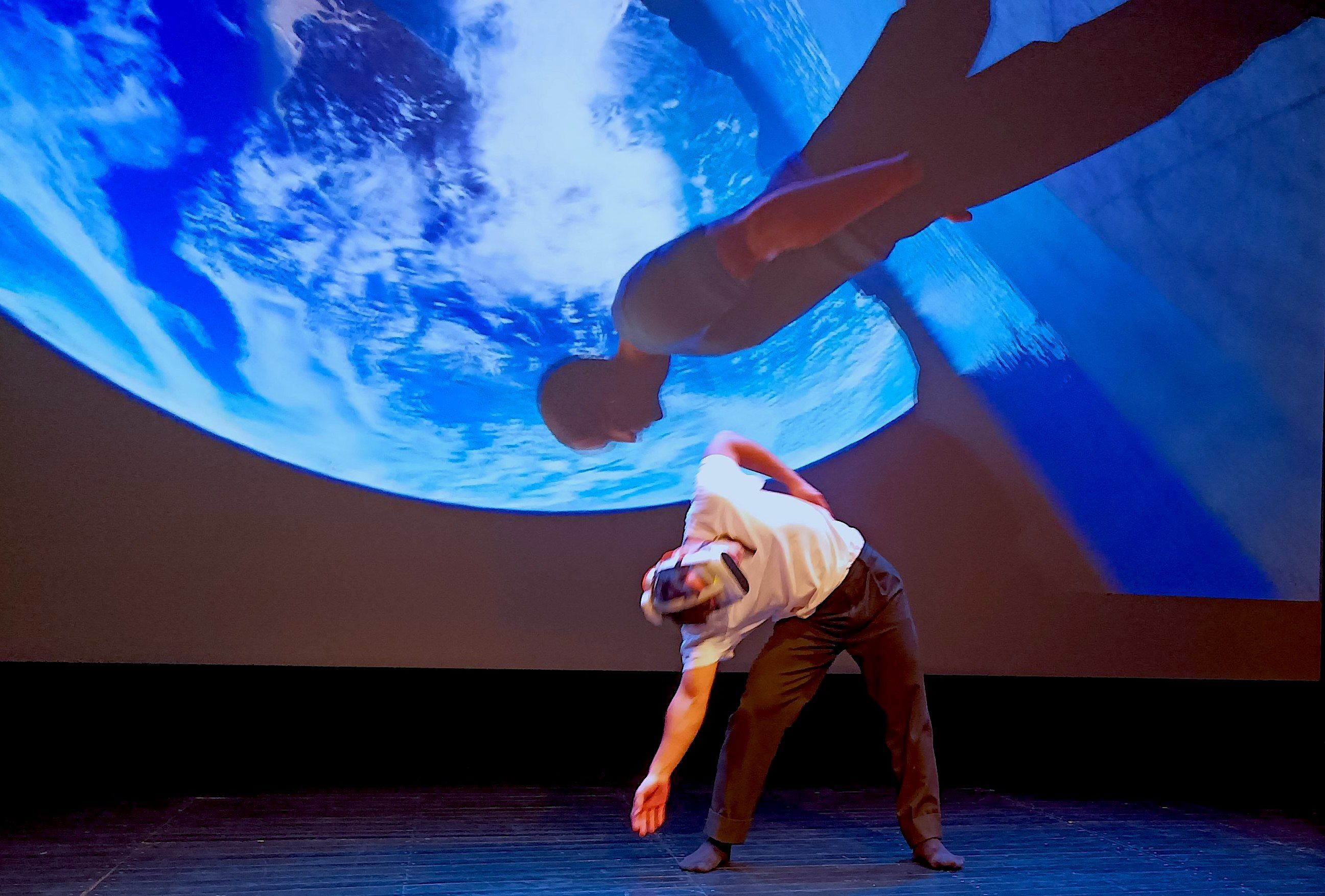Project description

Ghost Dance: A methodology to analyse dance movement in interaction with virtual reality
FCT:EXPL/ART-PER/1238/2021
Doi: http://doi.org/10.54499/EXPL/ART-PER/1238/2021
The increasing presence of digital interaction in our daily lives is becoming more evident. The confinement brought about by the pandemic years has drawn attention to how digital technologies mediate our relationships and has raised questions about the significance of physical presence.
In the context of digital interaction, human relationships lose the sense of embodiment that comes from touch, shared spatial experiences, and a vivid perception of movement. Nevertheless, as Susan Kozel argues [1], sharing our bodies through digital devices fosters collaborative exploration of new physical states, levels of consciousness, and even ethics. Many artists and scholars have approached this issue from various perspectives, but as digital interactions become more prevalent, we believe that, far from being an exhausted subject, further analytical and critical studies are urgently needed.
One of the technologies facilitating digital interaction is Virtual Reality (VR), where our physical body can interact with virtual bodies in a three-dimensional immersive environment and headsets replace outside stimuli with computer-generated images, creating a sensation of being present in another reality. While VR has been in the market for around four decades, it has only recently matured as a performance technology. VR explores new modes of bodily interaction, offering countless possibilities yet to be explored. However, interaction with a virtual body lacks the material and vibrant qualities inherent in a physical body, such as weight, temperature, touch, breath etc. This suggests a new relational paradigm where our material body interacts with immaterial entities, demanding a fresh perspective on movement analysis. Thus, a central question to explore is: How does our perception of embodiment change when we become immersed in a VR environment? What implications will this altered mode embodiment have on our relationship with our surroundings?
Contemporary dance explores an infinite variety of movements, encompassing not only traditional dance movements but also gestures from everyday life, sports, emotions, animals, and more. Analyzing such limitless potentialities of dance movement has always been a challenging task. Laban Movement Analysis (LMA), created by Rudolf Laban and further developed by Irmgard Bartenieff, is the most recognized and widely used system for movement analysis in dance. However, this system does not account for a virtual relationship where one of the dancers is an immaterial body. How does a physical dancer perceive weight, effort, time, and space when interacting with a virtual body? How does the dancer experience their own kinesphere, sense of touch, and bodily materiality when his own body form can be invaded by an immaterial entity in motion? The interactive relationship of a physical body with a VR body challenges the traditional analysis of movement as conceived by Laban.
The aim of Ghost Dance is to explore the embodied perception of dancers when they interact with virtual bodies and contribute to critical thinking within this new paradigm of non-physical relationships. Specifically, we will conduct a phenomenological and computational study of movement analysis based on the LMA system, contrasting movement relationships involving duets with flesh-and-blood dancers versus those involving a virtual body.
The project's results are envisioned in four main lines:
- A performance-conference that integrates physical reality with VR, to be presented on artistic and academic platforms;
- A website repository;
- Academic articles in reputable journals and conferences;
- Development of a software prototype for movement analysis in VR able to integrate LMA. This prototype will further lead to the establishment of guidelines for future implementation.
By critically examining the experience of (des)embodied relations, we believe that this project will make a significant contribution not only to the fields of performing arts and VR but also to the broader debate on artificial intelligence..
